Current Affairs Sep 2018 - Technology
1 - India, France to Collaborate on ISRO’s Gaganyaan - Human Space Mission
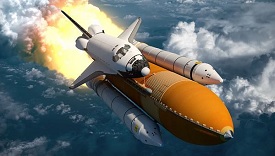
India (ISRO) and France (CNES) signed an agreement to collaborate on Gaganyaan mission, ISRO’s first human space mission.
The announcement was made at the sixth edition of Bengaluru Space Expo by French space agency President Jean-Yves Le Gall.
Mr. Gall said that ISRO and CNES, the French space agency, will be combining their expertise in the fields of astronaut health monitoring, space medicine, life support, radiation protection, space debris protection, and personal hygiene systems.
The Indian Space Research Organisation’s (ISRO) “Gaganyaan mission” to send three humans to space by 2022 is significant as it would make India one of the four countries in the world after Russia, US and China to launch a manned space flight.
2 - IAF Carries Out First Ever Mid-Air Refuelling of Tejas Combat
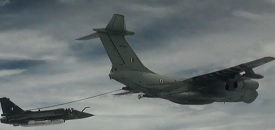
The Indian Air Force has successfully carried out the first ever mid-air fuelling of the indigenously developed Tejas light combat aircraft (LCA). To execute the process, a Russian-built IL-78 MKI tanker transferred fuel to Tejas MK I aircraft. The tanker was launched from Indian Air Force’s base in Agra while LCA Tejas fighter was launched from Gwalior.
3 - Japan Landed World’s First Robotic Rovers MINERVA-II1 on asteroid Ryugu
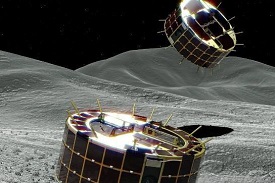
Japan became the world’s first country by launching two robotic rovers on asteroid Ryugu. It is also the first man made robot to have landed on an asteroid. The name of this project is MINERVA-II1, which consists of two rovers, Rover-1A and Rover-1B.
Developed by Japan Aerospace Exploration Agency, these two rovers had been aboard the Hayabusa2 spacecraft.
4 - Robot Crawls Human Body to Scan
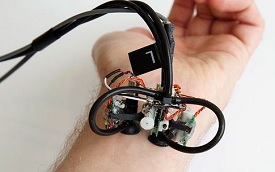
Scientists have invented a small robot designed move on human body to scan it. The success of such a new technology will definitely will help medical science greatly to diagnose and treat different diseases.
This SkinBot is a palm-sized bipedal robot with suction-cup feet stirred by leeches and the suckers of cephalopods. Artem Dementyev at the Massachusetts Institute of Technology Media Lab is passionately working on this project (small helper robots) that can substantially usher in medical science.
5 - Nasa's FOXSI Mission Ready to Study Sun Using X-Ray Vision

As per the US space agency report, NASA's FOXSI mission is all set to study the Sun by using X-ray vision. FOXSI or simply Focusing Optics X-ray Solar Imager is a sounding rocket mission designed by Nasa. Its objective is to study Nano-flares (mini explosions), which is invisible to the naked eyes.
In its report, NASA said the mission will take its third flight from the White Sands Missile Range in White Sands, New Mexico. NASA's FOXSI will travel about 190 miles up in the Earth's atmosphere to view and study the Sun.
6 - EyeROV TUNA, India's First Underwater Robotic Drone
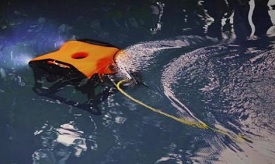
India's first underwater robotic drone capable to send real-time videos of ships and other underwater structures to help with their repair and maintenance, was launched. After the test, it is handed over to the Naval Physical and Oceanographic Laboratory (NPOL) of DRDO.
The first commercial Remotely Operated Vehicle (ROV)/underwater drone, named EyeROV TUNA, as it was developed by EyeROV Technologies, a company planted at Kalamassery-based Maker Village, Kochi.
7 - PSLV-C42 Launches 2 British Satellites
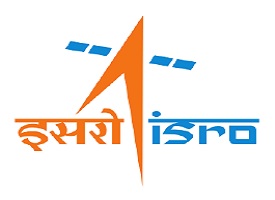
The Polar Satellite Launch Vehicle (PSLV-C42) of Indian Space Research Organisation (ISRO) successfully launched two British satellites namely NovaSAR and S1-4 from the Satish Dhawan Space Centre (SDSC) SHAR, Sriharikota. Both satellites were injected into the Sun Synchronous Orbit, about 17 minutes later, at an altitude of 583 km.
NovaSAR carries S-band Synthetic Aperture Radar (SAR) and an Automatic Identification Receiver payloads. Its applications include forestry mapping, land use and ice cover monitoring, flood and disaster monitoring, and maritime missions. It will be operated from SSTL’s Spacecraft Operations Centre in Guildford, UK. Whereas S1-4 is a high resolution earth observation satellite meant for surveying resources, environment monitoring, urban management, and disaster monitoring.
The satellites, which belong to UK-based Surrey Satellite Technology Limited (SSTL), has a contract with Antrix Corporation Ltd, the commercial arm of ISRO.



